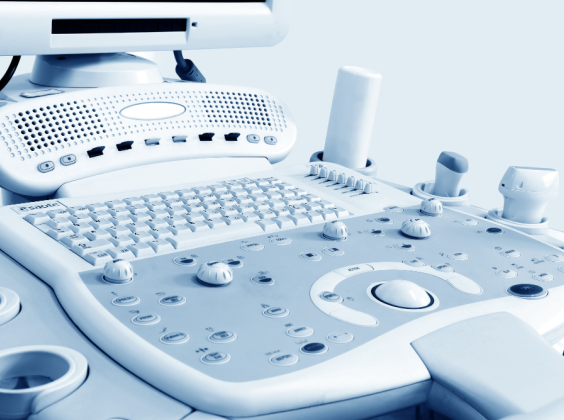
Written by

At first glance of the RSNA 2016 exhibition floor, one may have observed little has changed in ultrasound, apart from the re-emergence of live ultrasound scanning demonstrations after a 27-year hiatus. However, if you managed to get away from talking about artificial intelligence and the future role of radiology, innovation in ultrasound was clearly on show, albeit more subtly.
A new premium system baseline
The “flagship” premium category continues to evolve and break new ground for ultrasound clinical capability. While there were no market-defining features on show, it’s clear a new baseline has been established for system capability in the premium radiology category.
This was most evident from the array of premium systems now boasting a combination of shearwave and conventional elastography, real-time fusion and contrast-enhanced ultrasound (CEUS). This was particularly pertinent given the scrum of vendors showcasing liver CEUS, only approved in the US by the FDA earlier this year. Vendors clearly saw a big opportunity for demonstrating the combined diagnostic power of fusion imaging, quantitative shearwave elastography and real-time fusion for liver lesion assessment.
Throw in an array of nuanced improvements in workflow, widescreen displays and various other features, and it is becoming clear that the minimum criteria to qualify for “flagship” radiology ultrasound has been raised again.
Breast & MSK Everywhere
As has been evident in the past few shows, breast ultrasound continued to expand its reach across the booths of ultrasound exhibitors, albeit in a variety of forms. Focus continued to revolve around the lengthy time for conventional breast ultrasound scanning, with both automated breast ultrasound (ABUS) and whole-breast ultrasound (WBUS) seen as a potential time saving solution – most vendors in ABUS and WBUS claim scan times for similar results in the range of 1-5minutes, versus approximately 30 minutes for a conventional scan. While this is important for workflow and as ABUS/WBUS becomes more commonly used, the lack of an adaptive screening pathway based on breast-density pre-screening appears to still be some way off, suggesting large-scale use will be limited for the near future.
Also evident was the growing use of ultrasound for musculoskeletal (MSK) applications. Seen initially by many in the industry as the fourth true point-of-care (POC) ultrasound application after anaesthesiology, emergency medicine and critical care, MSK use is increasingly straddling the POC/traditional divide, highlighted in a variety of cart-based, pedestal and compact ultrasound systems. This suggest two distinct MSK markets are emerging; lower-capability, compact ultrasound for true POC imaging on the sport field or primary clinic, and more advanced diagnostic second or third generation users in specialist centres or the hospital, requiring higher capability systems. Quick to profit from this maturinguse-case, the focus on MSK by traditional cart-based system providers was far more pronounced than usual at the show.
Transducer innovation, app-based ultrasound & OB/GYN market heats up
Other notable trends from the show included:
- Growing focus on innovation in transducer technology, especially around high-frequency capability and wide-bandwidth solutions, designed to offer greater flexibility of use, or reduction in different types of transducer required
- System-in-a-transducer ultrasound was also on show again, both from Philips Healthcare’s Lumify and Clarius Mobile Health. Use of tablets as wi-fi remote-controls for premium ultrasound systems was also showcased with several premium cart-based systems, as a workflow benefit.
- The OB/GYN market, traditionally dominated by GE Healthcare, Samsung Medison, Hitachi-Aloka and Mindray, has also been targeted by Toshiba Medical (traditionally a general imaging and cardiology ultrasound specialist), with the launch of a dedicated system for women’s health, Aplio i800WHC.
